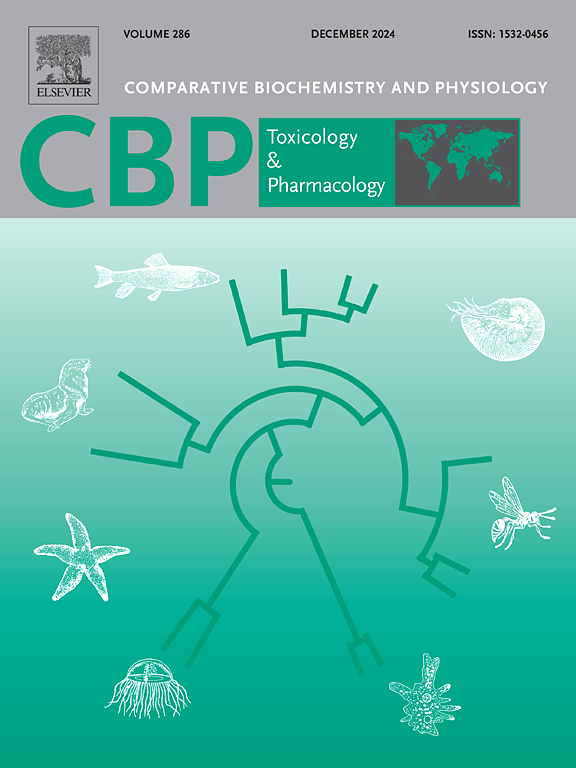Roundup Transorb reduces growth and expression of somatotropic axis genes in the silverside Odontesthes argentinesis fish larvae
IF 4.3
3区 环境科学与生态学
Q2 BIOCHEMISTRY & MOLECULAR BIOLOGY
Comparative Biochemistry and Physiology C-toxicology & Pharmacology
Pub Date : 2025-06-14
DOI:10.1016/j.cbpc.2025.110256
引用次数: 0
Abstract
Despite the use of herbicides has led to substantial increases in agricultural production, it has also introduced a series of environmental challenges that pose threats to the survival of non-target species in both terrestrial and aquatic ecosystems. Species of the genus Odontesthes have significant economic importance as they are valuable resources for artisanal fishing and local populations' income. Moreover, these organisms serve as crucial biological models in ecotoxicological and genetic research. Given the ecological and economic importance of Odontesthes argentinensis, this research aimed to investigate how the gene expression of the somatotropic axis (gh, ghr1, ghr2, igf1, and igf2) is impacted by the herbicide Roundup Transorb (RT), validating them as reliable biomarkers of exposure. O. argentinensis larvae were exposed to glyphosate at concentrations of 0.36, 1.8, and 3.6 mg/L for 96 h. The results indicate that there was a reduction in the expression of all analyzed genes in animals exposed to RT, resulting in decreased body growth. The expression of genes in the somatotropic axis was thus established as an effective biomarker for assessing exposure to Roundup Transorb herbicide.

农达Transorb降低阿根廷银齿鱼幼鱼的生长和促生长轴基因的表达
尽管除草剂的使用导致农业产量大幅增加,但它也带来了一系列环境挑战,对陆地和水生生态系统中非目标物种的生存构成威胁。齿齿鱼属的物种具有重要的经济意义,因为它们是手工捕鱼和当地居民收入的宝贵资源。此外,这些生物是生态毒理学和遗传学研究的重要生物模型。鉴于Odontesthes argentinensis在生态和经济上的重要性,本研究旨在研究生长促性轴(gh, ghr1, ghr2, igf1和igf2)基因表达如何受到除草剂农达Transorb (RT)的影响,以验证它们是可靠的暴露生物标志物。结果表明,暴露于草甘膦浓度为0.36、1.8和3.6 mg/L的阿根廷稻蛾幼虫暴露于草甘膦浓度为96 h后,所分析的所有基因的表达均减少,导致身体生长下降。因此,在促生长轴上的基因表达被确立为评估农达Transorb除草剂暴露的有效生物标志物。
本文章由计算机程序翻译,如有差异,请以英文原文为准。
求助全文
约1分钟内获得全文
求助全文
来源期刊
CiteScore
7.50
自引率
5.10%
发文量
206
审稿时长
30 days
期刊介绍:
Part C: Toxicology and Pharmacology. This journal is concerned with chemical and drug action at different levels of organization, biotransformation of xenobiotics, mechanisms of toxicity, including reactive oxygen species and carcinogenesis, endocrine disruptors, natural products chemistry, and signal transduction with a molecular approach to these fields.

 求助内容:
求助内容: 应助结果提醒方式:
应助结果提醒方式:


